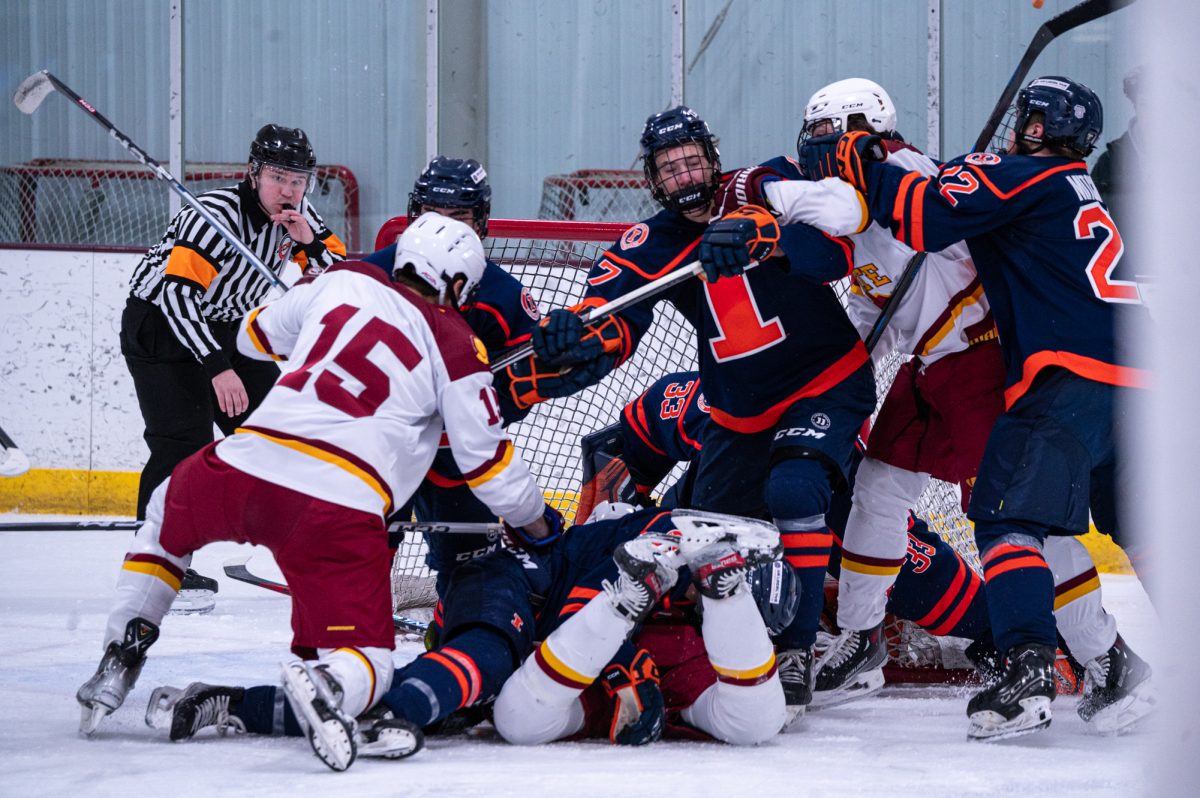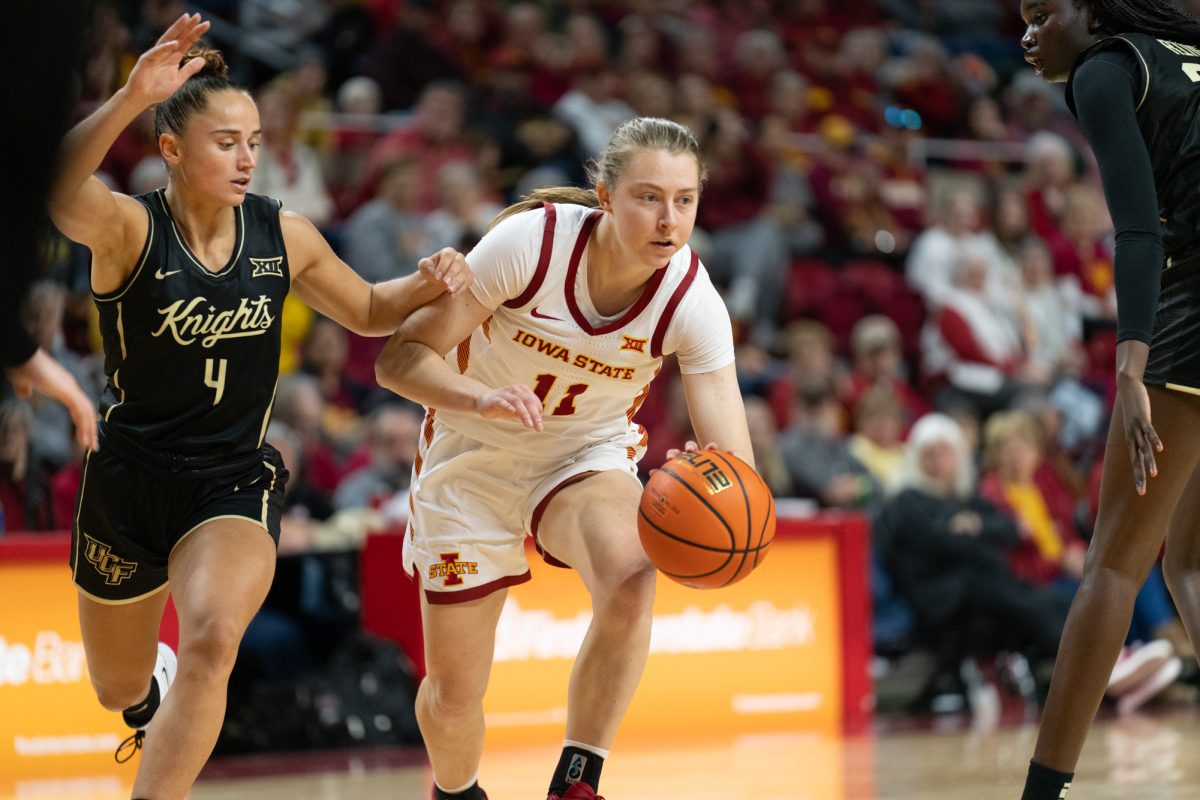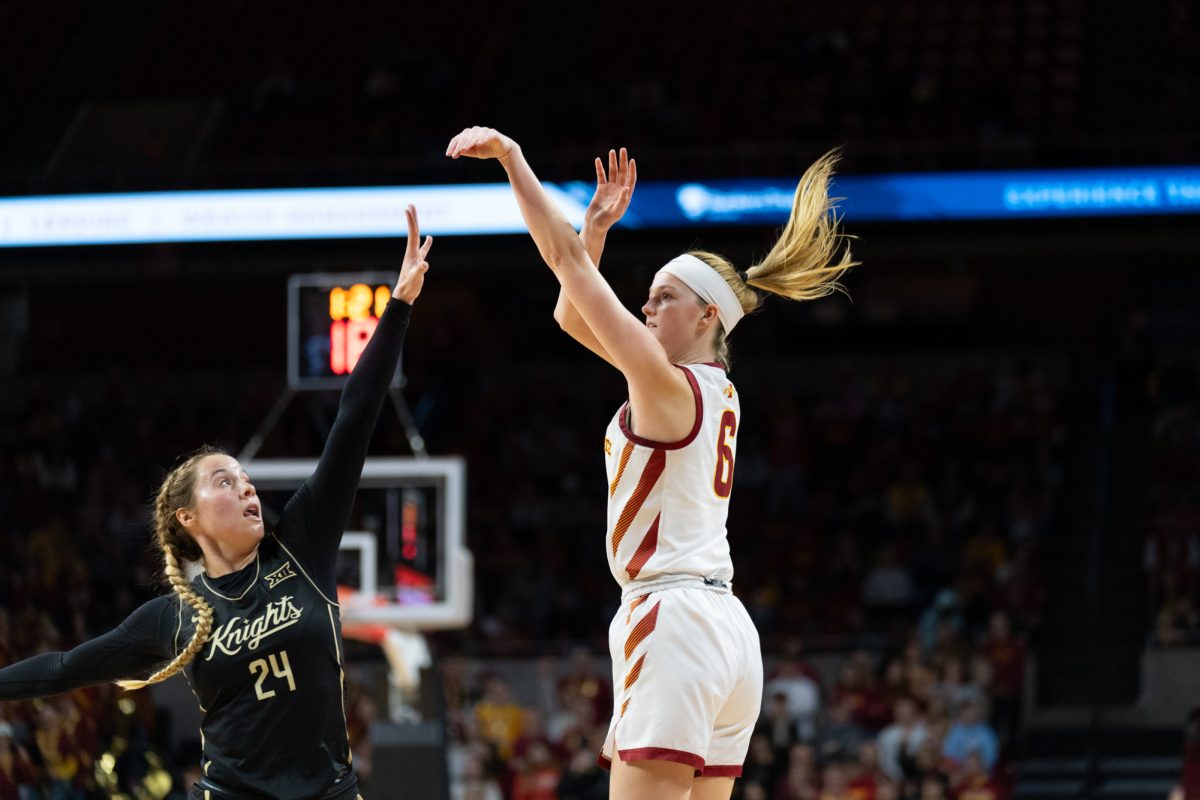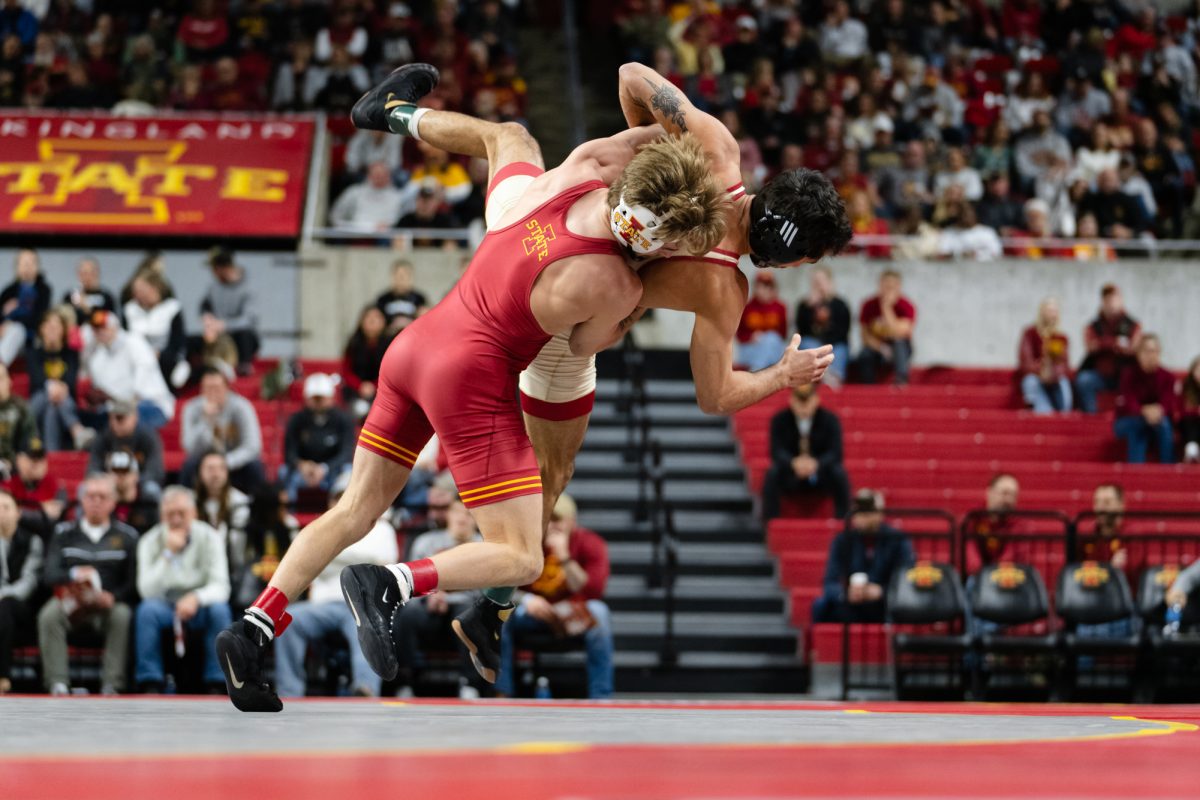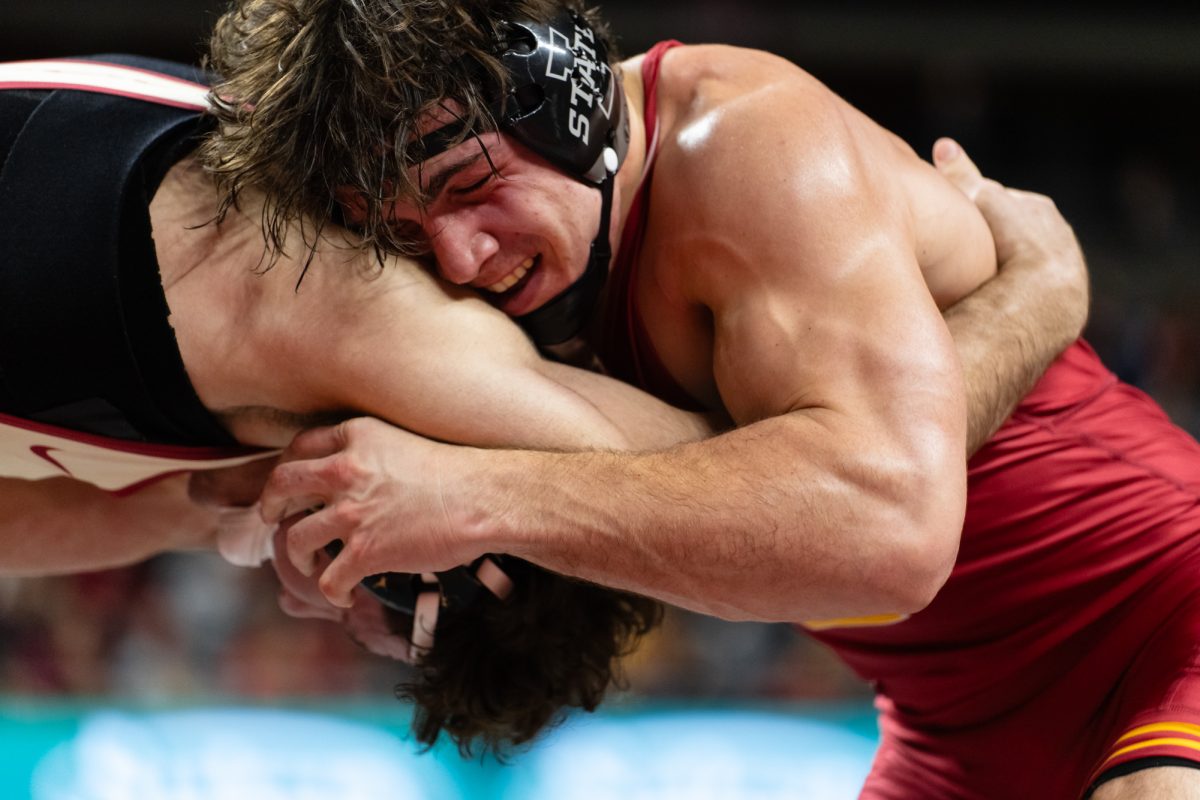Artwork gives ambassador hope while in Cambodia
June 20, 2001
A rocket strikes the side the United States Embassy in Cambodia, causing an explosion to rip through the building. Kenneth Quinn, U.S. Ambassador to Cambodia, dives to cover his wife and children, who are visiting for Father’s Day. Gunfire erupts outside as Quinn makes his way to radio for help.
This is only one of the scenes Quinn discussed in his speech, “Art Under Fire,” hosted by the Brunnier Art Museum on Sunday.
Quinn had been asked to speak about his experiences at the embassy and what the “Loess Hills” exhibit that he had borrowed through the “Art in Embassies” program had meant to him.
The “Art in Embassies” program allows every embassy to have art from America displayed in the reception room. The art is loaned and the State Department pays all of the expenses and the insurance to bring it there.
Quinn chose to take 18 of the paintings from the “Loess Hills” exhibit, “The Land of the Fragile Giants: Landscapes, Environments, and Peoples” to remind him of Iowa.
A Dubuque native and an alumnus of Loras College, Quinn discussed the feelings and emotions he went through when he was trapped alone in the U.S. Embassy in Cambodia, with only the art that he had borrowed from Brunnier to keep him company.
Opening speaker Lynette Pohlman, director and chief curator of the Brunnier Art Museum, said this was not the first time that Quinn had been under fire.
“His first assignment in the American Foreign Service was as a rural development officer in Vietnam,” she explained. “He eventually spent six years there during the war, logging more than 250 hours of helicopter combat and ground operations. He came under hostile fire on a number of occasions and was wounded in a North Vietnamese rocket attack.”
Quinn was also stationed in the Philippines and the Middle East at times when terrorism and political violence were commonplace in the area.
“Ambassador Quinn has directed embassy operations during approximately 50 violent demonstrations,” Pohlman said.
As Quinn himself approached the podium at Brunnier to speak about his experiences, a hush came over the room. The audience seemed to stop, hold its breath and wait for his words.
“Today, June 17th, is the day in which I had the most intense experience I ever had being a father, as well as my diplomatic career,” Quinn said. “Out of nowhere there is this incredible explosion right outside our house. The windows are blown in, you can just feel the concussion shake the building.”
Quinn said he desperately tried to cover his children to keep them safe from the gunfire that was occurring outside.
“Trying to figure out, when you are lying there on the floor, where is the likely angle that the bullets are going to come, so that I could be there to have a bullet hit me instead of them lets you know what being a father is all about,” Quinn said. “I thank God every day that my family wasn’t harmed.”
Quinn eventually made his way downstairs to where the 18 other Iowans in the house were and where the “Loess Hills” paintings were kept.
All of the windows were broken out of the room, yet miraculously the paintings were unharmed, he said.
“When that rocket hit on June 17th it was not an isolated incident,” he explained. “More fighting occurred over the next two weeks in which there was an all-out battle in the city.”
All Americans, including his family, had to be evacuated from the city. Everyone except Quinn, who had to stay.
“I would come back to my residence at night and my family was gone, all Americans were gone, it seemed like almost all hope was gone,” Quinn said. “It was a time of incredible depression.”
While all this was going on, Quinn said that he saw the artwork not merely as inanimate objects.
“They had become friends,” he said. “They were part of the psychological support. Even though everything else changed, when I came home they were still there, making me feel better, giving me a boost, giving me a little connection.”
Quinn then received a letter from the State Department urging him to box up the art and send it back to the United States so it would be safe.
“I was so incredibly sad when that came. It was the art that kept me going, what kept me from being totally at the bottom,” he said.
Then there was a breakthrough. Both sides had been convinced to stop the fighting, so Quinn did not have to box up the art and send it back.
“I am convinced that if the art had been taken away that I would have been very affected,” Quinn said. “This experience really brought home to me the role of importance that art can have.”


